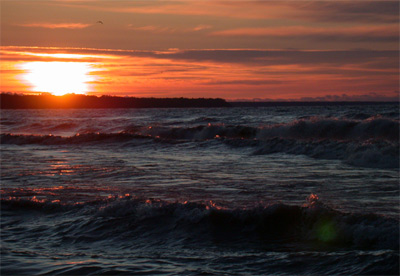
Before I knew there was a term for it, conscious interiority of our world's creatures has intrigued me ever since I can remember. I'm curious. What's it like to be a bobcat, trout, shrew or dragonfly? Moving along a hierarchy of consciousnesses, what's it like to be something other than human? Anthropomorphized ideas of such experiences can be rendered in my imagination, maybe even transcribed to a page, but they will always fall well short, necessarily so, of what must exist as a reality to those interiorities. Still, it's fun to try. As an admirer of feathered ones, the journey of birds during migration would be the ultimate interiority.
But then there's an awful thought – what if migration is excruciatingly painful and scary much of the time? It's said that many marathon runners hit a wall around 20 miles where extreme fatigue and pain sets in as their glycogen reserves are depleted. Within a bird, there are stages characterized by metabolic shifts, physiological and behavioral changes. In the first phase during early stages of flight, glycogen stores fuel metabolism. In the next phase a type of tissue degradation occurs when weight loss is slow and can be maintained for a few days. In the third phase, a metabolic and endocrine shift occurs where weight loss is rapid and cannot be sustained for very long or the bird will die. Finding a good stopover point to refuel and rest becomes critical to survival, but what about predators? Is migration a journey of constant struggle, urgency and fear?
I know from personal observation that many songbirds maintain mixed species flocks, but apart from morning and evening foraging, I'm unsure how dense these flocks are during nocturnal migration. If my moon disc observations hold a clue, then it would seem to me that they are often more than several yards apart from each another. As other species do, shorebirds maintain tighter flocks. Though there is probably a research study out there somewhere, I have noted the similarity of most warbler flight calls and have speculated the purpose they serve – holding mixed species flocks together. When close to or on breeding territory, songs, chip-notes and alert calls employed are unique. That's expected. In the skies during migration, the majority of warbler flight calls are so similar I am unable to distinguish them by any particular species. This, too, I think is expected. An individual bird can find the way, but being a member of a flock, even a mixed flock of similar species, must have tremendous advantages.
There have been times, at dawn or after a storm has just rolled through, I've observed warbler flocks descend from the skies uttering their seep flight calls. They sound virtually the same to me, but close inspection of the foragers reveals a dozen or so species. When the time comes to move on, seep calls increase with intensity and frequency, leaving together. I've read that a solitary migrating songbird approaching a large body of water will hesitate crossing it until other birds have arrived – and then they fly over it together. Knowing what they must do when unobserved combined with what can actually be observed by us; these flight calls seem like veritable directives “Follow me!” or “Come on, let's go!” that flock members respond to and echo. Not our words, of course, but something significant within their own interiority. Using the anecdotal, the material and pure speculation, it's really not all that difficult to imagine looking through the eyes of a trans-gulf migrating warbler; seeing what it sees, hearing what it hears and experiencing sensations of flight.
There is darkness - the expanse of the gulf, but clouds on the horizon illuminate from a rumbling storm. The water is well below you, unseen but present by a constant roaring - your heart pounds. Your wings beat furiously many times each second. The wind rolls against your feathers and eyes – you hear the calls and responses of your flockmates. Imagine the sensation of your own reply, formed and released from inside your feathered body. Openings between clouds reveal the celestial realm - an assurance in the form stars. The scale of your surroundings is so incredibly enormous, it must seem like you're barely moving at all. Eventually dawn comes and the orange sky is filled with flapping specs that are your flockmates, some nearer, but most farther. Finally, just several miles away, landfall nears and flight calls increase with a sense of urgency but also relief. The flocks begin to descend.
Sunrise image © 2007 Mike McDowell

















